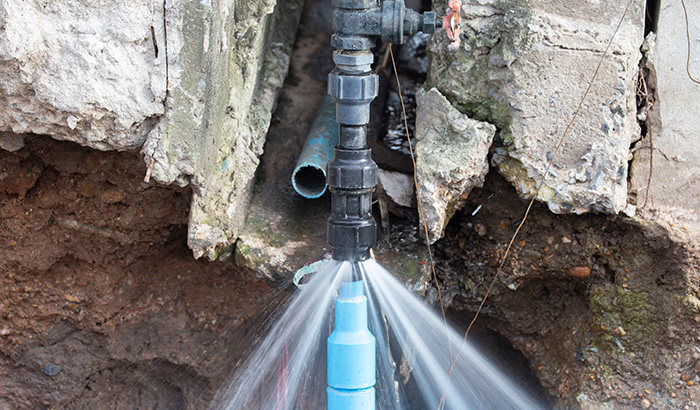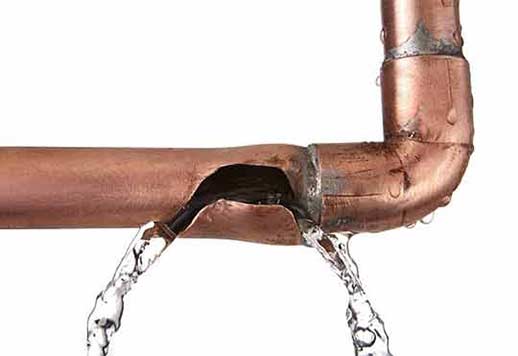The Hidden Dangers of a Burst Pipe and How to Fix It Quickly
The Hidden Dangers of a Burst Pipe and How to Fix It Quickly
Blog Article
Stopping Burst Pipes: Necessary Tips to Secure Your Plumbing
Protecting against burst pipes is a crucial problem for property owners, particularly during cooler months when the danger of cold is heightened. Executing critical steps such as correct insulation, routine evaluations, and keeping regular indoor temperatures can considerably lower the probability of pipeline failing.
Understand Pipeline Vulnerabilities
Understanding pipe susceptabilities is essential for effective plumbing maintenance and avoiding costly damage. Numerous aspects contribute to the sensitivity of pipes to bursts, consisting of product composition, age, and ecological conditions. Older pipelines, specifically those made from galvanized steel or polybutylene, frequently deteriorate over time, causing raised danger of tears and leakages.
Temperature level changes can also considerably influence pipe honesty. In colder environments, water trapped in pipelines can freeze, expanding and applying pressure on the pipe walls, which might inevitably cause a burst. Moreover, high water stress can stress pipes, particularly at bends and joints, enhancing the probability of failing.

Insulate Pipeline Properly
Appropriate insulation of pipelines is critical for avoiding freezing and succeeding ruptureds throughout chilly climate (burst pipe). Shielding your plumbing system efficiently safeguards versus temperature level goes down that can result in costly damages. Begin by determining vulnerable areas where pipes are revealed to outside temperatures, such as basements, attic rooms, and outside wall surfaces
Use foam pipe insulation sleeves or cover insulation tape around these areas to give a protective barrier. Make sure that all areas of the pipes, especially those with minimal warm direct exposure, get adequate insulation. Pay special focus to installations and joints, as these are extra at risk to cold.
When protecting, it's important to choose products that satisfy regional building codes and are suitable for the details setting. For circumstances, fiberglass insulation is commonly recommended for its thermal resistance buildings - burst pipe. Furthermore, consider making use of heat cables or tape in extreme conditions, which can be connected in to supply additional warm
Frequently check shielded pipes for any kind of indications of wear or damage, as endangered insulation can diminish its performance. By taking these proactive steps, you considerably decrease the danger of pipe bursts, ensuring a trusted plumbing system throughout the winter season.
Maintain Consistent Temperature Level
A secure indoor temperature level is necessary for stopping ruptured pipelines during the frigid months. When temperatures drop, water within pipes can freeze, broadening and creating pressure that might eventually trigger the pipes to ruptured.Using a programmable thermostat can assist handle indoor temperature levels efficiently, making sure that areas with pipes stay cozy also when the home is empty.
This small flow check here of water can stop freezing by easing stress within the pipelines. By applying these approaches, property owners can dramatically lower the danger of pipeline bursts and guard their pipes systems against the harsh winter aspects.
Routinely Examine Plumbing
Normal assessments of pipes systems are vital for protecting against ruptured pipelines and preserving general home honesty. During these assessments, it is crucial to examine visible pipelines for signs of rust, leaks, or put on.
Additionally, checking links and joints is essential, as these points are commonly susceptible to leaks. Property owners need to likewise assess water pressure degrees, as extreme pressure can strain the plumbing system and raise the risk of pipeline ruptureds.
Consider scheduling specialist pipes inspections at the very least once a year, especially before winter season, to ensure your system is prepared for cooler temperatures. By being aggressive in your technique, you can guard your home versus the pricey and disruptive consequences of ruptured pipelines.
Know Emergency Procedures
Recognizing emergency situation procedures is essential for every homeowner, especially after carrying out routine plumbing examinations. Being prepared for a plumbing emergency can considerably mitigate damages and conserve costs.
Following, maintain necessary tools useful. A plumbing emergency situation kit need to include a wrench, plunger, and towels, along with a flashlight and a bucket for little leaks. In addition, consider having the contact info for a trusted plumbing technician readily available, must the circumstance intensify past your control.
If you detect a leakage or burst pipeline, quickly turn off the water system and inform your plumber. Record the damages with photos for insurance coverage purposes. Understand the additional resources indicators of potential plumbing issues, anchor such as uncommon water stress variations or damp places on wall surfaces
Eventually, positive understanding and quick action are vital in handling pipes emergency situations, ensuring your home stays safeguarded and decreasing possible damages.

Verdict
To conclude, stopping burst pipelines necessitates a diverse approach that includes understanding pipeline susceptabilities, appropriate insulation, keeping regular interior temperature levels, normal assessments, and understanding of emergency situation treatments. By applying these necessary methods, the threat of plumbing failings can be significantly reduced, thus guaranteeing the durability and performance of the pipes system. Aggressive steps not just safeguard versus potential damage but likewise add to overall water preservation and the security of residential or commercial property.
In chillier climates, water caught in pipelines can ice up, putting in and expanding stress on the pipeline walls, which might ultimately lead to a ruptured. When temperature levels decline, water within pipelines can ice up, producing and expanding stress that might inevitably cause the pipes to ruptured. By implementing these strategies, house owners can dramatically reduce the risk of pipeline ruptureds and secure their plumbing systems versus the rough winter elements.

Report this page